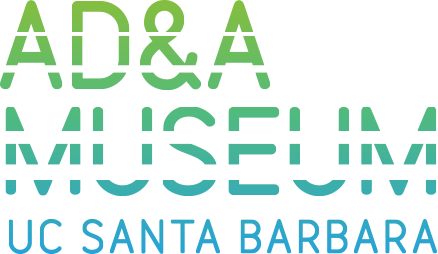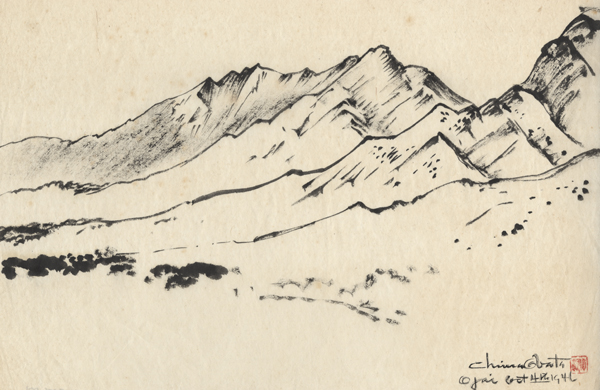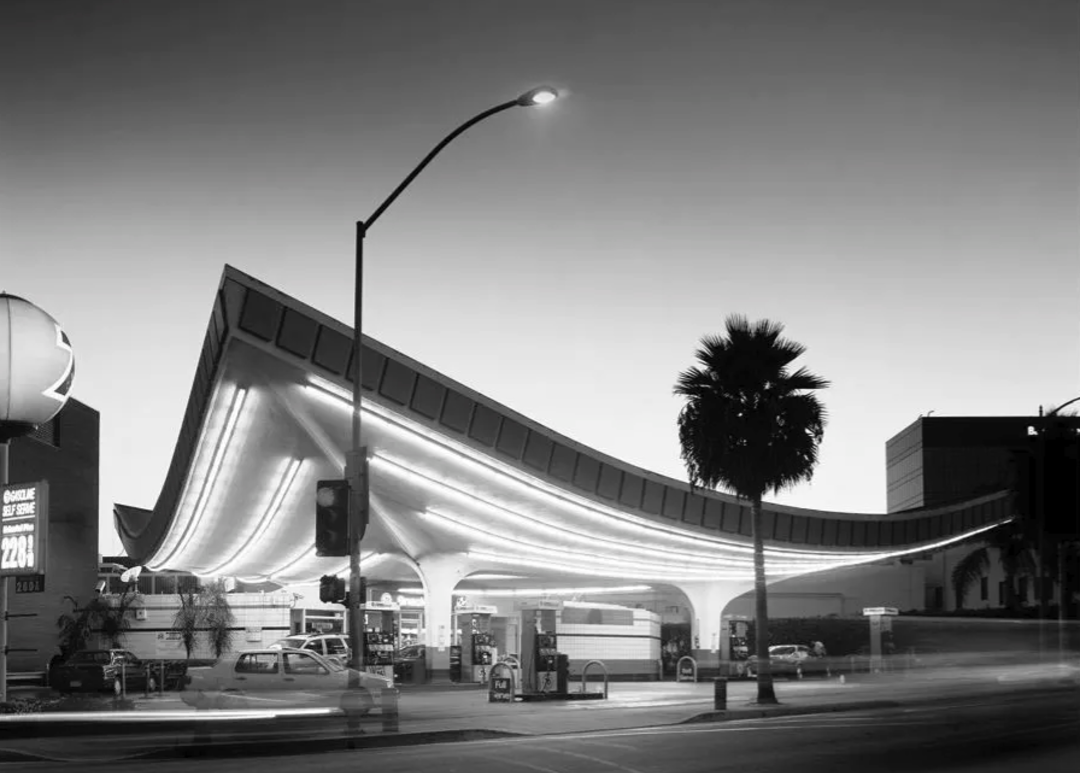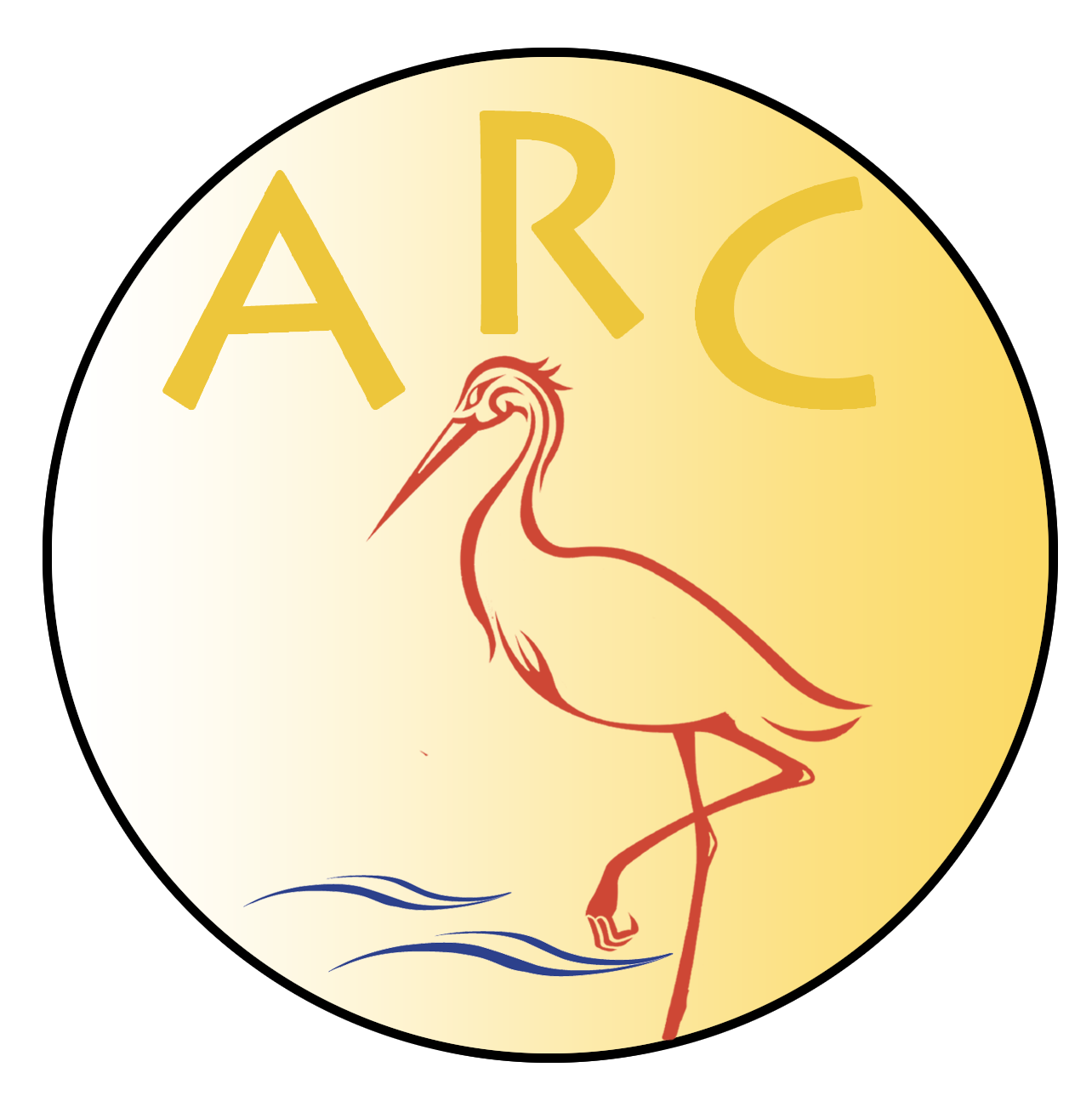In celebration of Asian American and Pacific Islanders and their contributions to American art and culture, the AD&A Museum presents selected works from the permanent collection by AAPI artists. We also feature the work of emerging artists, including recent UCSB graduates.
In collaboration with the Museum's Internship Program, a brief biography, with selections researched and written by the 2020-21 undergraduate interns, accompanies each work of art.
As a collective space for modern and contemporary art and culture, AAPI Artists and Resources also feature recommended books and artist archives from the UCSB Library, and resources and AAPI stories from the UCSB Asian Resource Center.
We will continue to update this space with more artists, resources, and events supporting the AAPI community.
ARTISTS & ARCHITECTS
John Way
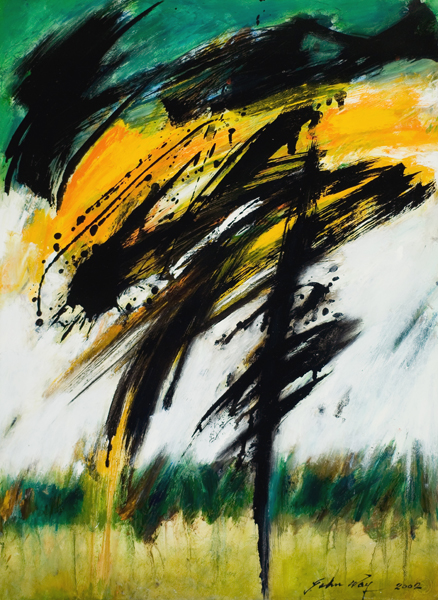
John Way, a Chinese-American artist born in Shanghai in 1921, was well known for his distinctive take on abstraction. Way’s first inspiration came from his mentor, famous calligrapher Li Zhongqian, with whom Way began studying at the age of ten. His fascination with Chinese calligraphy remained present in his art throughout his life. This passion merged with the influence of the Abstract Expressionist movement of the mid-twentieth century, which greatly affected Way’s artistic style as an up-and-coming artist. As a result, Way’s paintings display both the characteristic abstract brush strokes of this movement, interlaced with his unique take on ancient calligraphy practices. Shown here, ‘February No. 5’ presents Way’s style perfectly, filled with chaotic abstraction and painted over with calligraphic strokes. Like traditional Chinese calligraphy, the free-flowing style of Way’s practice was enjoyed by his audiences, culminating in an impressive career in the arts and several calligraphy book publications. (Olivia Thompson)
Image: John Way (1921–2012), February No. 5, 2001. Oil on paper. Gift of Qi Pan. Art, Design & Architecture Museum; UC Santa Barbara.
Parker Ito
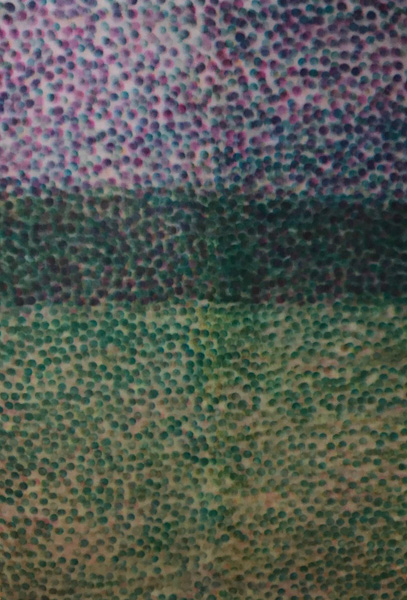
Contemporary artist Parker Ito specializes in a wide range of mediums. A fourth generation Japanese-American artist born in 1986, Ito involved himself in a plethora of artistic expression while growing up in Long Beach, California. He began acting and singing at a young age, even appearing on television as a child, before aspiring to become a professional skateboarder. Eventually, Ito found that art was his true calling. He painted oil derricks in Los Angeles, just north of his hometown, and began to dabble in painting, sculpture, and technology-based media. Working primarily with galleries in Los Angeles and China, Ito’s work has been showcased around the globe. His inkjet piece printed on silk, shown here, features a color gradient of dots transcending from deep pinks to dark greens. Ito continues to create his art as commentary on absorption, particularly about how humans interact with the onslaught of media in the modern world. (Olivia Thompson)
Image: Parker Ito (b. 1986), Inkjet Painting #49, 2013. Inkjet print on silk. Courtesy of Marc Selwyn Fine Art, Beverly Hills. Art, Design & Architecture Museum; UC Santa Barbara.
Chiura Obata
Ojai is a small southern Californian town in Ventura, north of Los Angeles, and known for its beautiful landscapes that draw visitors every year. Pictured in Sumi (Japanese term for black ink), a medium made from the soot of oil lamps, pinewood, animal glue and perfume, the iconic mountains of Ojai are brushed effortlessly in smooth lines onto paper.
Chirua Obata, who drew this landscape and others like it in 1946, immigrated to the United States in 1903 from Okayama, Japan. His life’s work and story includes experiencing the Japanese Internment during World War II. During this time, he founded and directed art schools within the camps. He became a prominent artist in Northern California, and an art professor at UC Berkeley. His works convey a love for the land and established him in the canon of great American landscape artists. (Skylar Lines)
Chiura Obata (1885–1975), Ojai, 1946. Sumi-ink on paper. Gift of the Chiura Obata Family Estate. Art, Design & Architecture Museum; UC Santa Barbara.
Dug Uyesaka
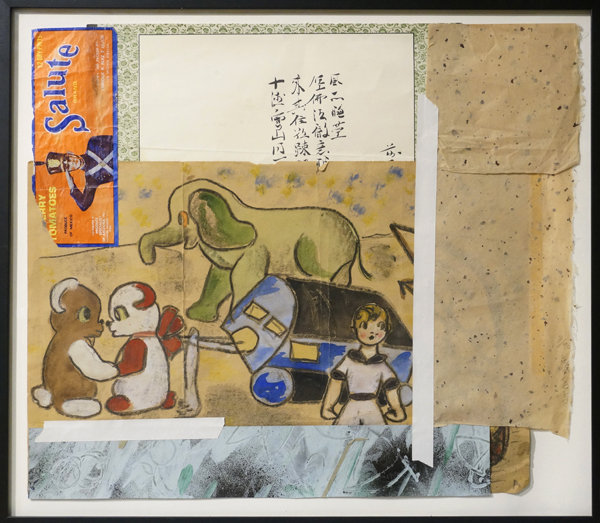
Dug Uyesaka (b. 1953), Collage with figures, animals and Japanese calligraphy, 2005. Gift of Estate of Frances Garvin and Keith Julius Puccinelli. Art, Design & Architecture Museum; UC Santa Barbara.
Hung Liu
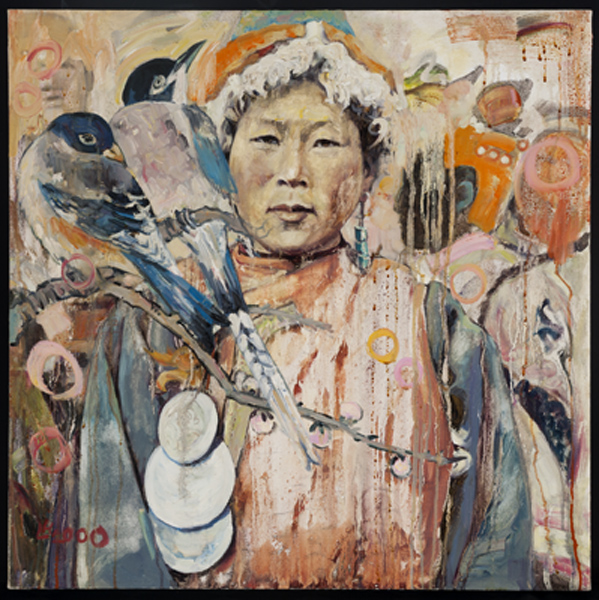
Hung Liu is a Chinese artist born in Changchun, under the communist regime of Mao Zedong. She has lived through much chaos, with revolution, exile, and displacement. As a result, her documentary images, based on historical photographs, focus on elevating the stories of people who have historically been unheard: ranging from prostitutes and refugees to soldiers and prisoners. Liu’s images speak powerfully to the complex narratives of these struggling individuals. Her portraits display often forgotten individuals in a dignified manner as a way to lend power to their stories.
Liu painted this particular portrait with the same artistic philosophy. This work depicts a Yi woman. It is strongly implied that she is travelling in hopes of a better life elsewhere. In spite of her struggles as a Chinese ethnic minority, she stands tall and bears a stoic, determined expression. Like many of Liu’s paintings, the drips on the canvas make the work appear somewhat dissolved, which alludes to the way in which memory slowly deteriorates as time goes on. At the same time, however, by turning photographs into large-scale paintings, Liu effectively revitalizes the past. (Daniel Ong)
Hung Liu (b. 1948), Border Portrait: Yi Woman, 2000. Oil on canvas. Art, Design & Architecture Museum; UC Santa Barbara.
Yoon Lee
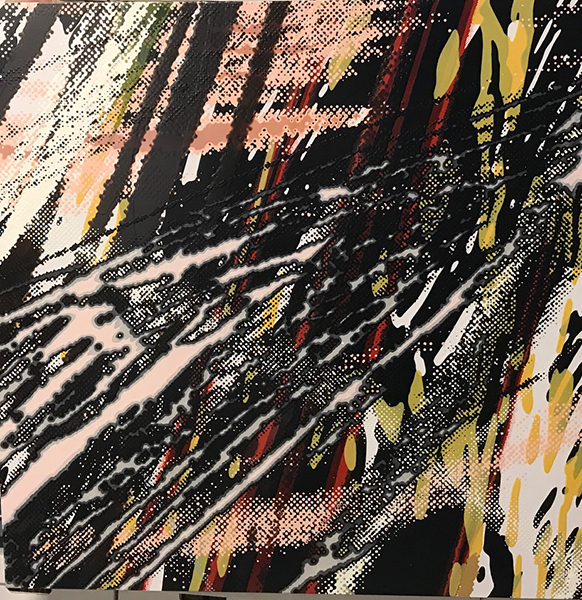
Yoon Lee is a Korean painter born in Busan, Korea. She is best known for her large-scale acrylic paintings, which tend to be both abstract and dynamic. Her unique painting style often includes large sweeping motions throughout the canvas, making her work appear spontaneous. However, upon closer inspection, it is clear that this is not the case. She develops layers in her compositions by using a computer to filter through images of popular media. She then manipulates these forms to create a sense of motion in her paintings. Her work is actually multiple coatings of carefully applied paint. Thus, her meticulous process contrasts greatly with the energetic appearance of her paintings: a dichotomy between order and chaos.
Swipe is a perfect example of Lee’s artistic style. It shows large and sweeping black brushstrokes scattered amongst swipes of pinks, yellows, and reds. While this work was completed slowly and carefully, the title of the piece combined with its gestural appearance conveys a sense of chaos and speed. (Daniel Ong)
Yoon Lee, Swipe, 2008. Acrylic on Sintra (PVC panel). Art, Design & Architecture Museum; UC Santa Barbara.
Alina Kawai
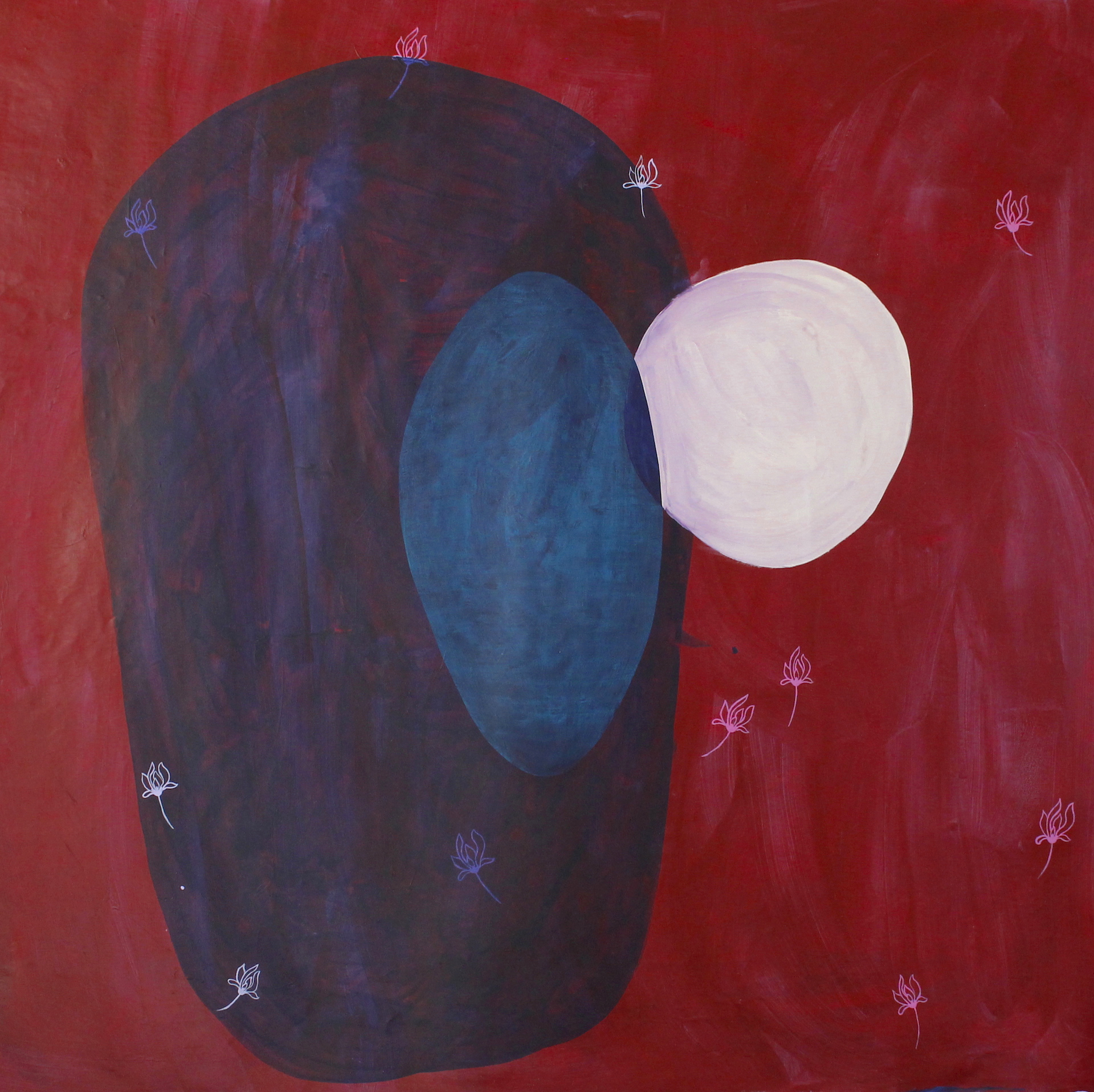
Kio Griffith
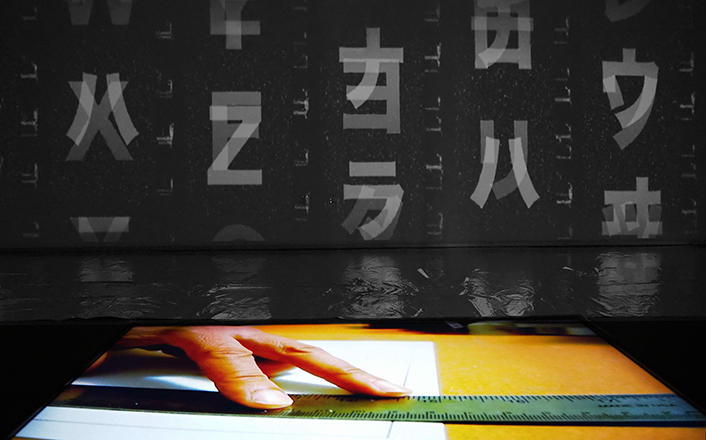
Gin D. Wong
Ben Sakoguchi
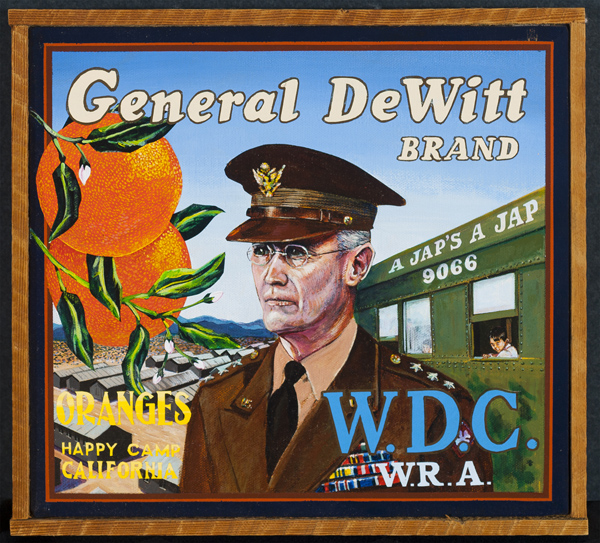
UCSB Library Resources
Books on Asian Americans and Pacific Islanders
From: https://guides.library.ucsb.edu/asianamerican/countering
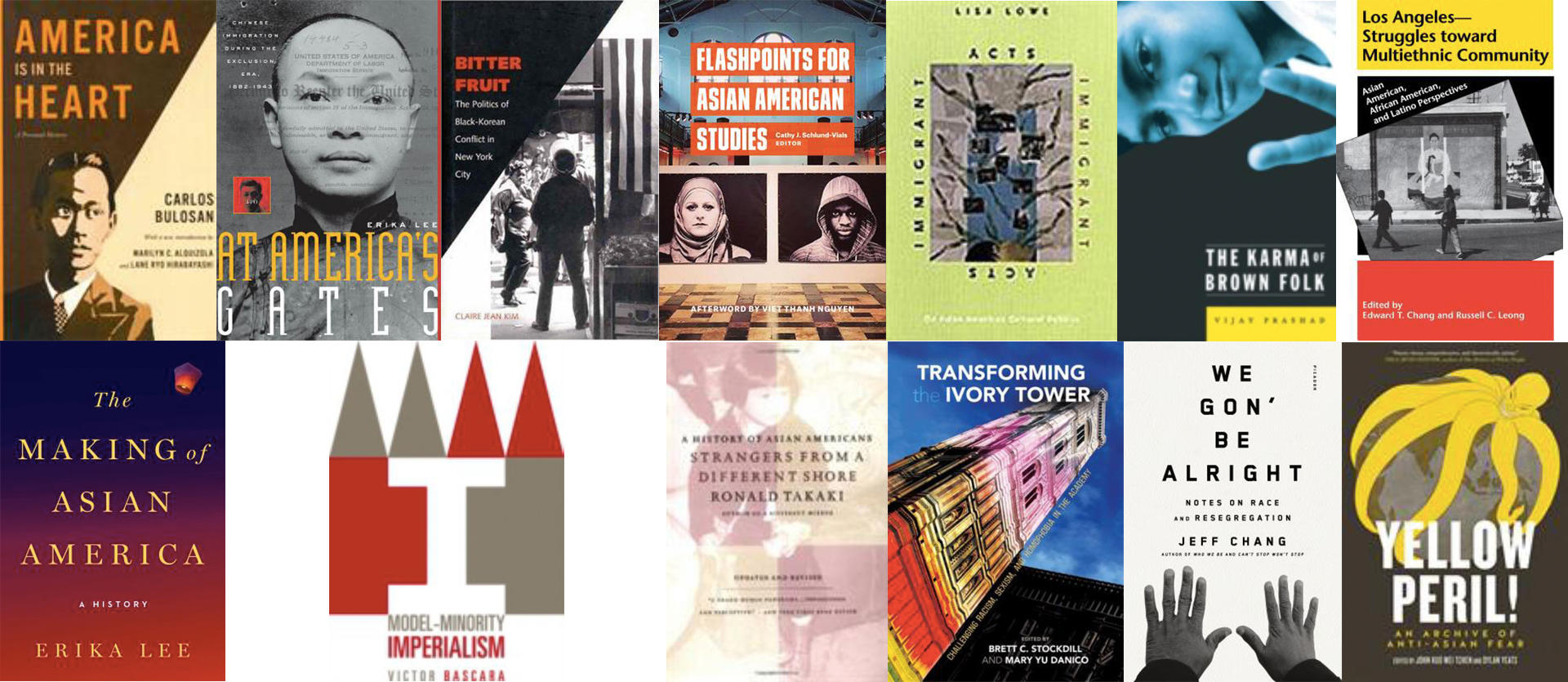
Special Collections, Asian American and Pacific Islander Archives
From: https://www.library.ucsb.edu/special-collections/cema/asian-pacific-american-collections
Selected archives of AAPI Artists:
Dong, Jim - visual artist, photographer - https://www.library.ucsb.edu/jim-dong-papers
Gee, Zand - printmaker, graphic designer, photographer - http://www.oac.cdlib.org/findaid/ark:/13030/c8mg7qvg/
Hsiang, Bob - photographer - http://www.oac.cdlib.org/findaid/ark:/13030/c8gq738k/
Hom, Nancy - silkscreen artist, writer, graphic designer, curator, children’s book illustrator - https://www.library.ucsb.edu/special-collections/cema/NancyHom
Ito, Michio - choreographer, dancer - https://oac.cdlib.org/findaid/ark:/13030/c82809hb/
Kearney Street Workshop - oldest multidisciplinary Asian American arts organization in the United States - https://www.library.ucsb.edu/special-collections/cema/kearny
Lim, Genny - playwright, poet, performance artist - http://www.oac.cdlib.org/findaid/ark:/13030/c8zg6ss4/
Seigel, Shizue - writer, visual artist - https://www.library.ucsb.edu/special-collections/cema/seigel
Tagatac, Sam - filmmaker - http://www.oac.cdlib.org/findaid/ark:/13030/c86m3c7d/
Tom, Cynthia - visual artist, curator, community artist activist - https://www.library.ucsb.edu/cynthia-tom-papers
Tanaka, Gayle - visual artist, photographer - http://www.oac.cdlib.org/findaid/ark:/13030/c80867h5/
Wong, Flo - installation artist - http://www.oac.cdlib.org/findaid/ark:/13030/kt7z09s5t2/
Wong, Leland - illustrator, photographer, screen printer - http://www.oac.cdlib.org/findaid/ark:/13030/c83t9npz/
Asian Resource Center
Located on the ground floor of the Student Resource Building, the Asian Resource Center (ARC) first began at UCSB in 1997. A meeting space and activity center, the ARC also houses a library of Asian Pacific American books, videos, photos, student group information, and events. Here for all students who attend UCSB, the ARC is a place to kick back, study, and relax with friends.
In May, the ARC celebrated APIDA storytellers through social media. Developed by ARC's Katherine Vu, the project shares individual experiences of Asian, Pacific Islander, and Desi American creators. We share director Lulu Wang's story, courtesy of the ARC. For more, follow the ARC on Instagram @ucsb_arc.



